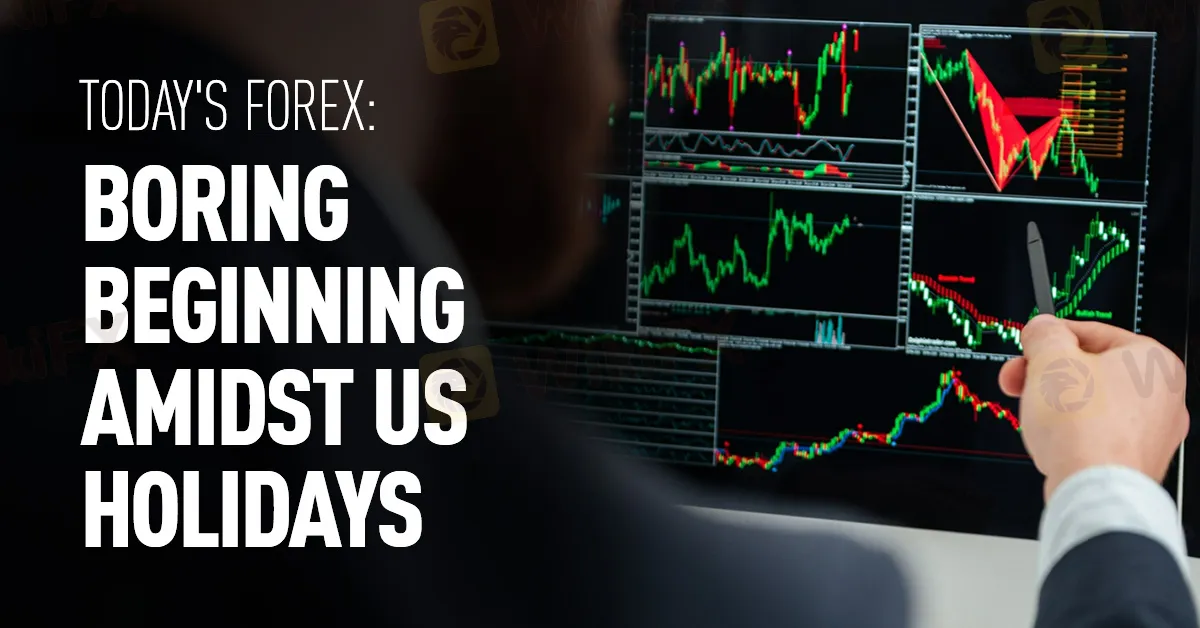简体中文
繁體中文
English
Pусский
日本語
ภาษาไทย
Tiếng Việt
Bahasa Indonesia
Español
हिन्दी
Filippiiniläinen
Français
Deutsch
Português
Türkçe
한국어
العربية
TODAY'S FOREX: BORING BEGINNING AMIDST US HOLIDAYS
Abstract:Major pairs continued to trade in narrow ranges during US and Canadian vacations, staying put at well-known levels. Even still, investors maintained a cautious optimism, with certain European and Japanese market indices nearing all-time highs.

THINGS YOU SHOULD DO ON TUESDAY, FEBRUARY 20:
Major pairs continued to trade in narrow ranges during US and Canadian vacations, staying put at well-known levels. Even still, investors maintained a cautious optimism, with certain European and Japanese market indices nearing all-time highs.
While GBP/USD is battling around about 1.2600, EUR/USD managed to hold below 1.0800. The pound gained during the European trading day, but it lost ground before the close.
The US Dollar saw slight gains vs safe-haven currencies like CHF and JPY, which inexplicably suggests that the financial markets are doing well.
The Australian dollar had a slight increase compared to the US dollar, with the AUD/USD pair trading at roughly 0.6540. In contrast, the Canadian dollar weakened slightly versus its American counterpart; at this point, the pair is getting close to 1.3500.
The Reserve Bank of Australia (RBA) Meeting Minutes, which were released early on Tuesday, will kick off the macroeconomic calendar in Australia. The document may offer new insights into the actions that the RBA Board intends to take or possibly what is required for policymakers to start reducing rates and feel more confident about inflation declining.
For the third day in a row, Spot Gold increased and momentarily moved above $2,020.00 per troy ounce.
The People's Bank of China (PBoC) will also make its interest rate decision public. Every month, the PBOC sets the Loan Prime Rate (LPR).
Canada's Consumer Price Index (CPI) for January is expected to rise 0.4% month over month on Tuesday following a 0.3% decrease in December.
The foreign exchange market is an international, decentralized, over-the-counter platform where currencies can be traded. The foreign exchange rates for each currency are set by this market. It covers every facet of purchasing, selling, and converting currencies at established or current rates. The act of purchasing one currency and selling another with the intention of profiting from the transaction is known as foreign exchange, or Forex trading. The terms foreign and exchange are combined to form the acronym forex (FX). The Bank for International Settlements, a global bank that serves national central banks, stated in a 2022 triennial report that the daily global volume of FX trading hit $7.5 trillion in 2022.
THE CURRENT US DOLLAR PRICE
The US dollar's (USD) percentage change compared to a list of major currencies is displayed in the table below. The US dollar outperformed the Swiss franc in terms of strength.
| USD | EUR | GBP | CAD | AUD | JPY | NZD | CHF | |
| USD | 0.05% | 0.11% | 0.09% | 0.00% | 0.04% | -0.15% | 0.21% | |
| EUR | -0.05% | 0.06% | 0.04% | -0.05% | -0.01% | -0.20% | 0.16% | |
| GBP | -0.11% | -0.06% | -0.02% | -0.13% | -0.07% | -0.26% | 0.10% | |
| CAD | -0.09% | -0.03% | 0.01% | -0.10% | -0.05% | -0.25% | 0.14% | |
| AUD | 0.01% | 0.06% | 0.12% | 0.09% | 0.05% | -0.15% | 0.23% | |
| JPY | -0.03% | 0.01% | 0.10% | 0.06% | -0.05% | -0.19% | 0.17% | |
| NZD | 0.16% | 0.20% | 0.25% | 0.25% | 0.15% | 0.19% | 0.36% | |
| CHF | -0.21% | -0.17% | -0.10% | -0.12% | -0.23% | -0.18% | -0.36% |
The major currencies' percentage movements relative to one another are displayed on the heat map. The quotation currency is selected from the top row, and the base currency is selected from the left column. For example, the percentage change shown in the box will indicate EUR (base)/JPY (quote) if you select the Euro from the left column and proceed along the horizontal line to the Japanese Yen.

Disclaimer:
The views in this article only represent the author's personal views, and do not constitute investment advice on this platform. This platform does not guarantee the accuracy, completeness and timeliness of the information in the article, and will not be liable for any loss caused by the use of or reliance on the information in the article.
Read more

Will natural disasters have an impact on the forex market?
The forex market is known for its rapid responses to global events, but the influence of natural disasters, such as earthquakes and typhoons, can be less straightforward. While headlines may scream about catastrophic damage and economic disruption, the long-term effects on currency values often depend on a blend of immediate shock and underlying economic fundamentals.

Navigating the Intersection of Forex Markets, AI Technology, and Fintech
The financial world is transforming, driven by the rapid integration of artificial intelligence (AI) and innovative fintech solutions. This change is most apparent in forex markets, where algorithmic trading and deep learning are redefining strategies, risk management, and decision-making. In this article, we explore how AI-driven technologies are not only revolutionizing forex trading but are also propelling fintech innovations that enhance customer experiences, bolster security, and unlock new market opportunities.

The One Fear That’s Costing You More Than Just Profits
The fear of missing out (FOMO) is NOT what you think it is! Read the three lesser-discussed components that contribute greatly to FOMO trading!

SocialFi and the Forex Market: A New Era for Decentralized Social Trading?
The worlds of social media and decentralized finance (DeFi) have converged under a new banner—SocialFi. Short for “Social Finance,” SocialFi leverages blockchain technology to reward user engagement, giving individuals direct control over their data and interactions. While SocialFi has primarily emerged in the context of content creation and crypto communities, its principles could soon revolutionize the forex market by reshaping how traders share insights and monetize social influence.
WikiFX Broker
Latest News
How Crypto Trading Transforms FX and CFD Brokerage Industry
UK would not hesitate to retaliate against US tariffs - No 10 sources
FCA Warns Against 10 Unlicensed or Clone Firms
CySEC Warns Against 14 Unlicensed Investment Websites
Top Currency Pairs to Watch for Profit This Week - March 31, 2025
Will natural disasters have an impact on the forex market?
Philippines Deports 29 Indonesians Linked to Online Scam Syndicate in Manila
Navigating the Intersection of Forex Markets, AI Technology, and Fintech
Exposed: Deceptive World of Fake Trading Gurus – Don’t Get Fooled!
AI-Powered Strategies to Improve Profits in Forex Trading
Currency Calculator







